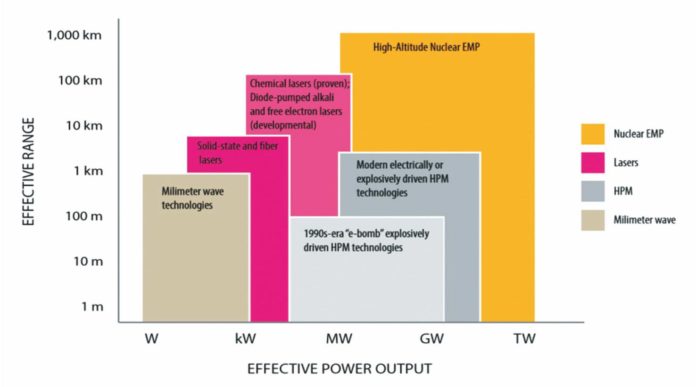Defence Research and Development Organisation (DRDO) recognises that future battle space will be shaped by technology and technological superiority and the country must be technologically self-reliant. Development of cutting edge technology having defence application needs considerable investment in terms of time, money and human resource. Ministry of Defence’s (MoD) document titled “Technology Perspective & Capability Roadmap (TPCR)”, provides an overview of the direction in which the Armed Forces intend to head in terms of capability over the next 15 years, which in turn drives the technology in the developmental process.
India’s tactical and strategic defence capabilities got a boost with the DRDO establishing five laboratories, each in specialising in core area of futuristic technologies. The specialised areas of work for these laboratories are artificial intelligence, quantum technologies, cognitive technologies, asymmetric technologies and smart materials. These laboratories are located at Bengaluru, Mumbai, Chennai, Kolkata and Hyderabad.
New and futuristic area of asymmetric technologies, which will change the way wars are fought, will be based out of campus of Jadavpur University in Kolkata. The research in hot and critical area of smart materials and their applications will be based out of Hyderabad. Research in the area of rapidly evolving artificial intelligence will be carried out at Bengaluru, while the all-important area of quantum technology will be based out of IIT Mumbai. The future is dependent on cognitive technologies and IIT Chennai will house the lab embarking in this area of research.
Directed Energy Weapons
Directed energy weapons (DEWs), like high-energy lasers and high-powered microwaves, will become strategic game-changers in the not-too-distant a future. DRDO was working on laser-based DEWs, which can disable missiles without debris.
DRDO/BARC’s KALI (Kilo Ampere Linear Injector) is a directed-energy weapon designed to work in such a way that if an enemy missile is launched towards India, it will quickly emit powerful pulses of Relativistic Electron Beam (REB) and destroy the target.
In contrast, the ASAT or anti-satellite missile that the DRDO tested on March 27, killed an orbiting Indian target satellite and left hundreds of small pieces as debris for a few months.
The DRDO’s Hyderabad-based lab, Centre for High Energy Systems and Sciences (CHESS) is the node for all related activities. In February 2014 the government sanctioned Rs 115 crore for development of “experimental technology modules for directed energy laser systems” by CHESS.
DRDO has an ongoing development of a 10-kilowatt DEW against UAV like targets, with “the establishment of critical technologies of precision tracking/pointing and laser beam combination”. The “system” has been tested up to a range of 800 meters at CHESS.
Development of DEWs and electromagnetic pulse (EMP) weapons has been identified as a top-priority area in the 15-year TPCR chalked out by the defence ministry.
But the real challenge will be in achieving the declared aim to develop solid-state laser DEWs for aircraft and warships, which can destroy enemy ballistic missiles in their “boost phase itself.”.
The DRDO’s Laser Science & Technology Centre is working on an array of systems from “chemical oxygen iodine lasers” to “high-power fiber lasers” for strategic uses, which includes a 25-kilowatt laser to take on a ballistic missile du-ring its “terminal phase” at a distance of 5-7 km.
Current megawatt-class systems emphasize free-electron and diode-pumped alkali laser technologies. Recent developments in solid-state and fiber lasers, designed primarily for tactical engagement, feature lower-power systems tailored for forward-deployable platforms. They effectively meet technical challenges including power-scaling, beam quality and thermal management and packaging for use on appropriate operational platforms.
Microwave Energy Weapons
The modern explosively and electrically driven high-power microwave devices produce non-nuclear EMP effects. High-power microwave weapons have proven capable of gigawatt-class power output that can disrupt or even destroy modern electronics, but at comparatively short range. They can also be employed for counter-personnel applications such as crowd control or perimeter security.
Electronic effects that can be generated by radiofrequency systems can be characterised in Four main types :
- Upset – Altering the electrical state of a node (Jamming)
- Lock-Up – Electrical reset is required (System Reboot)
- Latch-Up – Electric Power to a node is cut-off (Blown fuse )
- Burnout – Physical damage to the electronics (Melting of Circuit Boards)
DRDO has developed High Power Microwave (HPM) modules and Terahertz devices. The Microwave Power Module (MPM) was developed by MTRDC. This compact RF Power Module is capable of giving continuous RF Power in very wide frequency band and could be used as transmitter for naval defence and civilian radars, communication and Electronic Warfare systems.
Hypersonic Technology Demonstrator Vehicle
The HSTDV is an unmanned scramjet demonstration aircraft for hypersonic speed flight. It is being developed as a carrier vehicle for hypersonic and long-range cruise missiles, and will have multiple civilian applications including the launching of small satellites at low cost.
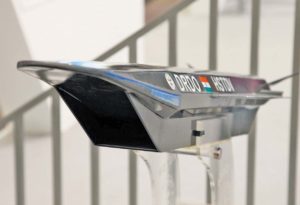
HSTDV is intended to attain autonomous scramjet flight for 20 seconds, using a solid rocket launch booster. The research will also inform India’s interest in reusable launch vehicles. The eventual target is to reach Mach 6 at an altitude of 32.5 km.
In the June 12, 2019 test, the cruise vehicle was mounted on an Agni-I solid rocket motor to take it to the required altitude. After the required altitude was reached and the Mach was achieved, the cruise vehicle was ejected out of the launch vehicle. Mid-air the Scramjet engine was auto-ignited, and propelled the cruise vehicle at Mach 6.
Due to technology denial of material for the scramjet engine, a new program was initiated and the materials were developed in-house. This led to self-sufficiency in the area and the scramjet engine was ground tested successfully for 20s instead of the initial 3s.
Hexapod by CAIR
The Centre for Artificial Intelligence and Robotics (CAIR) has excelled in design and development of cutting edge technologies in the domains of Artificial Intelligence, Robotics, Command and Control, Networking, Information and Communication Security leading to development of mission critical products for secure battlefield information systems, communication, and management systems.
A key vertical at CAIR is ‘Intelligent Mobile Robotics’, which works on multi-disciplinary design and development of mobile robots and the associated intelligent algorithms.
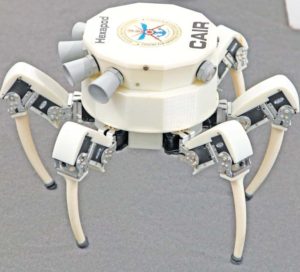
One of the key technologies for realisation of Intelligent Mobile Robots is the capability of the robot to understand its environment and react in a context sensitive manner.
CAIR is presently developing Multi Agent Robotics Framework (MARF) through a multilayered architecture for enabling collaboration amongst a team of robots. The heterogeneous composition and collaboration capability can effectively contribute to a myriad of military applications, such as surveillance, exploration and mapping, search, and rescue, etc.
CAIR has developed six and four legged robots. These robots have three degrees of freedom legs giving them omni-directional motion capability. The robots have been equipped with ultrasonic sensors for obstacle detection and avoidance. The hexapod, six-legged robot, has reptilian leg configuration while the quadruped, four legged robot, has mammalian leg configuration. The quadruped has additionally been provided actuated wheels to enable hybrid locomotion capability. These platforms have given an insight into the implementation of stable gaits for legged locomotion.
CBRN Mini UGV by VRDE
Vehicle Research and Development Establishment developed CBRN (Chemical, Biological, Radiological & Nuclear) Mini UGV is used for detection, sample collection and marking of CBRN contaminated (Chemical, Biological, Radiological & Nuclear) zones without risk of exposing personnel. UGV being unmanned/ tele-operated vehicles have upper edge over conventional manned NBC recce vehicles, specifically, in terms of personnel safety for the armed forces.
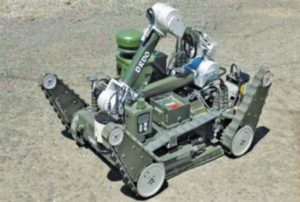
MUNTRA-M Unmanned Armoured Vehicle by CVRDE
Muntra-M is an unmanned armored vehicle developed by Combat Vehicles Research & Development Establishment (CVRDE). The name stands for “Mission Unmanned Tracked.”
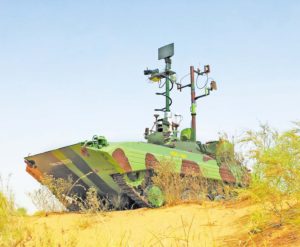
While referred to as a “tank” by the Indian media, it is a conversion of the Soviet BMP-2 armored personnel carrier. Current variants are unarmed. Three variants exist: Muntra-S for surveillance, Muntra-M for mine clearing, and Muntra-N operating in nuclear or chemical contaminated zones.It has a minimum level of autonomous navigation through GPS waypoints with obstacle detection and avoidance.
Liquid Armour to Protect Troops
DRDO is developing “liquid armour” for use in bullet-proof jackets. Liquid armour is a material that remains in a state of a thick liquid or jelly under normal conditions, but changes its viscosity – it hardens under pressure or impact. Also called shear thickening fluid, it is composed of synthetic and nano particles of silica and metallic elements.
The project is being undertaken by DRDO’s Terminal Ballistics Research Laboratory (TBRL) in collaboration with National Chemicals Limited (NCL), a laboratory based in Pune under the Council for Scientific and Industrial Research and the Indian Institute of Technology (IIT), New Delhi.
E-bombs
DRDO is developing an E-bomb which will emit electromagnetic shock waves on the communication networks of enemy forces. These shock waves will destroy electronic circuits and cripple communication networks in the field. These GPS enabled E-bombs can shoot at mobile targets, air defence systems, mobile or static radars, naval vessels with communication systems and even ill-shielded communication or electronic systems at a military base.
These bombs can be delivered by combat aircraft equipped to deliver guided munitions and cruise missiles.
AURA Combat UAV
AURA or Autonomous Unmanned Research Aircraft is an Indian initiative at building an Unmanned Combat Air Vehicle (UCAV) with special preference given to the stealth features. The AURA program is also meant to compete with the other programs like fifth-generation aircraft to provide the IAF with the best technically advanced UCAV which will form the backbone of the air force in the next decade .
One of the basic difference between the AURA & Rustom program is that the former is a stealth UCAV powered by a jet engine while the latter is a prop-based engine.
Nano Technologies
DRDO has endeavoured to take long term initiatives for advanced systems to employ them for force multiplication by utilizing nanotechnology through its multi-faceted human resource. Soldiers would make use of multifunctional nanostructures in future with mechanical, opto-electronic, chemical and biological functions and will have biotic/abiotic interface between body and equipment.
The DRDO labs have made concerted efforts for the development of defence oriented applications of nanotechnology, like biosensors, smart textiles with capability of self-cleaning, antimicrobial, NBC protection, water repellency and flame retardancy, etc. The efforts have resulted in successful development of nanotubes/nanowires based dry electrodes for remote physiological monitoring. DRDO is also engaged in development of nanoparticle based contrast molecular imaging agents and multimodal imaging probes for specifically targeting oncological and neurological disorders. Development of human and environmental safe novel nanocarriers for drug delivery, nano-inhalation therapy and nano-neutraceuticals are the prospective areas of DRDO.
DRDO has planned to set up nano materials research and production facilities at Hyderabad, Delhi and Kanpur to realise the potential of nano technology in modern warfare.
- Solid State Physics Laboratory (SSPL) has identified two applications of defence interest, namely cold cathode for vacuum microelectronics in collaboration with MTRDC and gas sensors for chemical agent detection along with DRDE.
- Defence Research and Development Establishment (DRDE), Gwalior has developed a biosensor for detection of pathogens (Malaria, Brucella & Typhoid) based on electrochemical principle.
- Instruments Research and Development Establishment (IRDE), Dehradun has initiated work on Metamaterials, Photonic Crystals and Silicon Photonics. Metamaterials will allow us to tailor properties of materials or create materials with properties which are non-existing in natural materials. They can be used to make miniaturized antennas and communication systems; precise imaging systems in manufacturing, defense, and medicine as well as being used in military and space applications.
- Defence Materials and Stores Research & Development Establishment (DMSRDE), Kanpur has worked on growth of ZnO, In2O3, ZrO, undoped nanowires and doped nanowires (In with Zn etc.) for oxygen sensing.
- Microwave Tube Research and Development Center (MTRDC), Bangalore has taken up development of enabling technologies for vacuum microelectronic devices along with SSPL, SITAR, ARCI and Pune University as partners. Vacuum microelectronic devices are micrometer-scale devices with nano field emitters. They inherit the best properties of vacuum electronic devices like high, intrinsic radiation hardness and high-temperature operation compared with SSPAs. They find several military and civilian applications like active array radar, EW and communication.
- Naval Physical and Oceanographic Laboratory (NPOL), Kochi has worked towards pentacene based FET and processable nanofibres as active material.
- Naval Materials Research Laboratory (NMRL), Ambernath is working on composites of Poly (3-methyl thiophene)-Carbon Nanotubes for Solid Electrolyte Supercapacitors.
- Defence Bioengineering and Electromedical Laboratory (DEBEL), Bangalore is progressing in the field of nano-sensors with Semiconducting Metal Oxide Nanomaterial based Gas Sensors, and is further planning to develop Gas Sensor Array based on Semi conducting Metal Oxide Nanomaterials for monitoring gases in defence environment.


